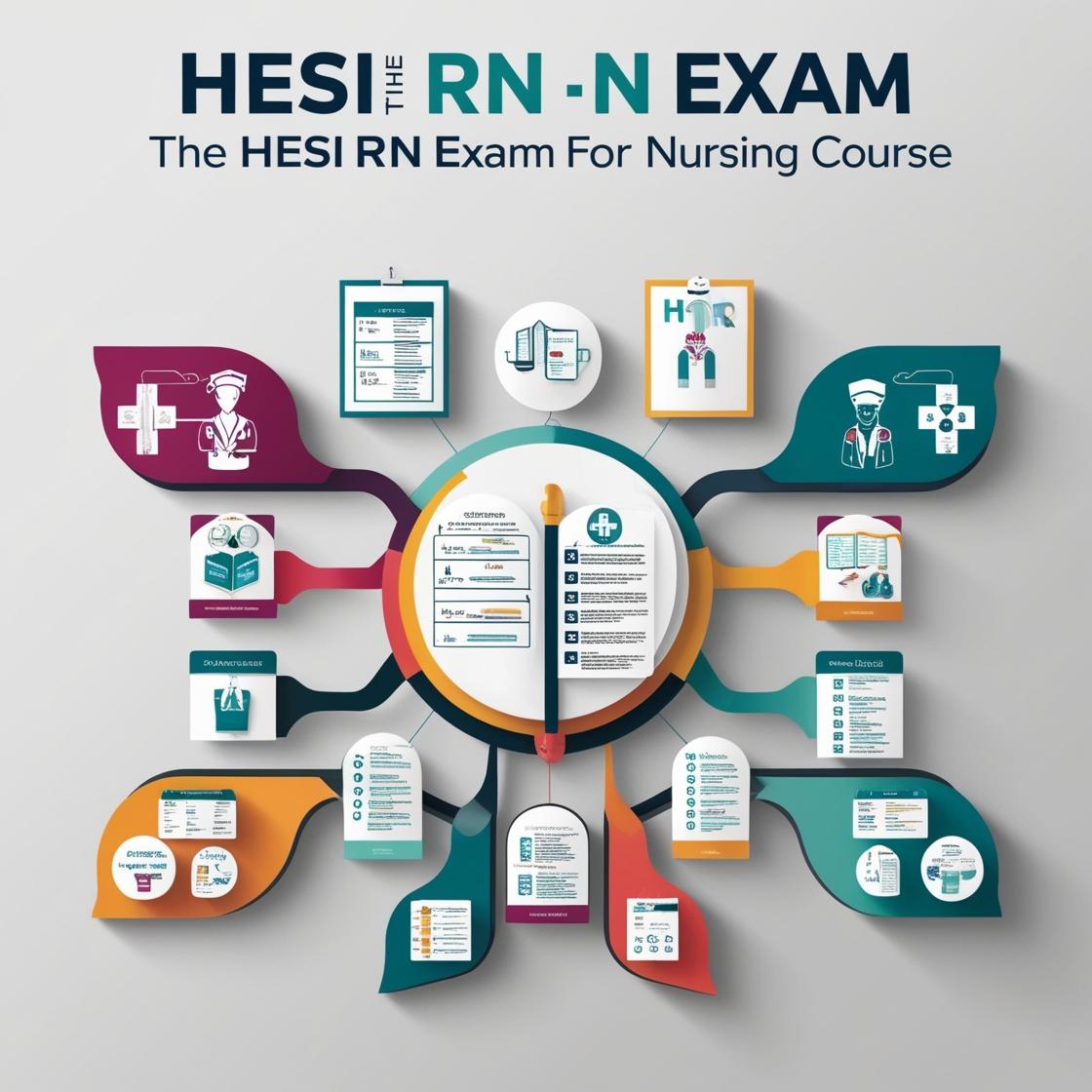HESI RN
HESI 799 RN Exit Exam
1. A male client with impaired renal function who takes ibuprofen daily for chronic arthritis is admitted with gastrointestinal (GI) bleeding. After administering IV fluids and a blood transfusion, his blood pressure is 100/70, and his renal output is 20 ml/hour. Which intervention should the nurse include in care?
- A. Maintain the client NPO during the diuresis phase.
- B. Evaluate daily serial renal laboratory studies for progressive elevations.
- C. Observe the urine character for sedimentation and cloudy appearance.
- D. Monitor for onset of polyuria greater than 150ml/hour.
Correct answer: B
Rationale: Evaluating daily renal laboratory studies is crucial in this scenario. The client has impaired renal function, recent GI bleeding, and is at risk for further kidney damage due to ibuprofen use. Monitoring renal labs helps assess kidney function and detect any progressive elevations, guiding further interventions. Option A is not directly related to renal function monitoring. Option C focuses more on urine appearance than renal function assessment. Option D mentions polyuria, which is excessive urine output, but the question describes a client with reduced renal output.
2. A male client is having abdominal pain after a left femoral angioplasty and stent, and is asking for additional pain medication for right lower quadrant pain (9/10). Two hours ago, he received hydrocodone/acetaminophen 7.5/7.50 mg. His vital signs are elevated from the previous hour: temperature 97.8 F, heart rate 102 beats per minute, respiration 20 breaths per minute. His abdomen is swollen, the groin access site is tender, peripheral pulses are present, but the left leg is larger than the right. Preoperatively, clopidogrel was prescribed for a history of previous peripheral stents. Another nurse is holding manual pressure on the femoral arterial access site which may be leaking into the abdomen. What data is needed to make this report complete?
- A. Client's lungs are clear bilaterally, and oxygen saturation is 97%.
- B. The surgeon needs to see the client immediately to evaluate the situation.
- C. Left peripheral pulses were present only by Doppler pre-procedure.
- D. Client's history includes multiple back surgeries and chronic pain.
Correct answer: B
Rationale: The correct answer is B. Immediate evaluation by the surgeon is necessary due to the possibility of an internal hemorrhage, which is a life-threatening condition. Choice A is incorrect as lung status and oxygen saturation are not the priority in this situation. Choice C is not relevant to the current urgent issue. Choice D, while providing additional history, is not pertinent to the immediate concern of a potential internal hemorrhage post angioplasty and stent placement.
3. The nurse is preparing to administer an intramuscular injection to a client with muscle wasting in the gluteal region. What is the most appropriate site for the injection?
- A. Dorsogluteal site
- B. Ventrogluteal site
- C. Deltoid site
- D. Vastus lateralis site
Correct answer: D
Rationale: The vastus lateralis site is the most appropriate for an IM injection in a client with muscle wasting in the gluteal region. Administering the injection in the vastus lateralis ensures effective medication delivery due to muscle wasting in the gluteal region, preventing potential complications associated with the dorsogluteal or ventrogluteal sites, which may not be suitable in this specific client case. The deltoid site is mainly used for smaller volumes of medication and may not be ideal for this scenario.
4. The nurse is caring for a client with a tracheostomy who has thick, tenacious secretions. Which assessment finding requires immediate intervention?
- A. Crepitus around the tracheostomy site
- B. Dry and cracked tracheostomy site
- C. Mucous plugging of the tracheostomy tube
- D. Yellowing of the skin around the tracheostomy site
Correct answer: C
Rationale: Mucous plugging of the tracheostomy tube is the most concerning assessment finding in a client with a tracheostomy. It can lead to airway obstruction, which requires immediate intervention to ensure the client's airway remains patent. Crepitus around the tracheostomy site may indicate subcutaneous emphysema but is not as urgent as a blocked airway. A dry and cracked tracheostomy site may indicate poor skin integrity but does not pose an immediate threat to the client's airway. Yellowing of the skin around the tracheostomy site could suggest a localized infection, but it is not as critical as a potential airway obstruction caused by mucous plugging.
5. The nurse is preparing to administer an IV dose of ciprofloxacin to a client with a urinary tract infection. Which client data requires the most immediate intervention by the nurse?
- A. Serum creatinine of 4.5 mg/dL (398 μmol/L SI)
- B. Temperature of 101.3°F
- C. Blood pressure of 140/90 mmHg
- D. Heart rate of 88 bpm
Correct answer: A
Rationale: A serum creatinine level of 4.5 mg/dL indicates severe renal impairment, which requires immediate attention before administering ciprofloxacin. Elevated serum creatinine levels suggest decreased kidney function, and giving ciprofloxacin can further harm the kidneys. Monitoring and addressing renal function are crucial to prevent worsening of renal impairment and potential drug toxicity. The temperature, blood pressure, and heart rate are important parameters to assess, but in this scenario, the priority is to address the severe renal impairment before proceeding with ciprofloxacin administration.
Similar Questions

Access More Features
HESI RN Basic
$89/ 30 days
- 50,000 Questions with answers
- All HESI courses Coverage
- 30 days access @ $89
HESI RN Premium
$149.99/ 90 days
- 50,000 Questions with answers
- All HESI courses Coverage
- 30 days access @ $149.99
